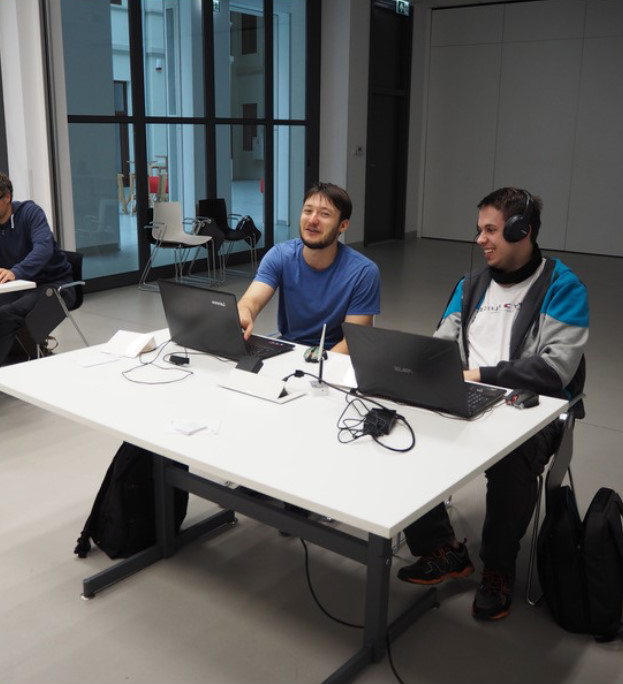Implementing neurodiversity
Gain an advantage over your competitors. Employ people on the autism spectrum and get synergies in your team.
It is estimated that 1 in 100 people will hear a diagnosis of autism.
This means that you may already have a person on the spectrum in your team.
To manage a neurodiverse* team well you need:
• understand what autism is and what new values a work on the autism spectrum can bring to the team of a worker on the autism spectrum;
• learn the principles of good communication with people on the autism spectrum and how to adapt the working environment to their needs and expectations.
Many people on the autism spectrum do their work meticulously, thoroughly and methodically. They often have a great memory for numbers and analytical skills. With the right support, fair treatment and understanding from the employer, these people are very loyal employees They focus on their tasks and give their best to do them properly.
*neurodiversity – diversity resulting from the different development and functioning of the nervous system, among other things. in people on the autism spectrum and with Asperger’s syndrome.
What companies that choose to implement neurodiversity and adapt working conditions to accommodate employees on the autism spectrum gain:
- committed professionals in their field of interest;
- better team communication through clear information, precise procedures and processes;
- improving the effectiveness of managers, who look more closely at the work of the team and notice places for improvement before they become a problem;
- innovative and out-of-the-box approaches to problem-solving;
- an image of an employer that is socially committed and open to the needs of its employees;
- employees willing to develop, thanks to which the whole company grows.
Successful implementation of neurodiversity in a company requires adequate knowledge and preparation of employees. It is useful to draw on the experience of people who work with people on the autism spectrum (including Asperger’s syndrome) on a daily basis.
At asperIT, we were the first in Poland to develop a
strategy, about building neurodiversity in companies
and organisations
At asperIT, we were the first in Poland to develop a
strategy, building neurodiversity in companies
and organisations
The programme we have created includes three levels of acquiring the knowledge and practical skills needed to work with a worker on the autism spectrum.
Level I
Tons of essential knowledge about autism to learn about the characteristics and behaviours of people on the spectrum. It will help them understand what their different behaviour is due to, what consequences it brings and what to expect from an employee on the spectrum.
This level builds awareness and familiarises you with the concepts of neurodiversity. It allows you to understand neuroatypical people, learn about diagnosis and support methods. Without this level, it is not possible to understand the principles of dealing with employee on the autism spectrum or to effectively manage a neurodiverse team. Level I begins with introductory training from the education pathway.
Level II
It’s about learning strategies for dealing with staff on the autism spectrum. How do you communicate and assign tasks? What adjustments should be made to improve the accessibility of recruitment and jobs for people on the autism spectrum? Implementing this level prepares employee to work directly with neuroatypicals.
Level II deepens the knowledge of autism with extension training from the education pathway.
Implementing neurodiversity in the company must begin with theoretical basics. The knowledge from Level I and Level II training must be consolidated and communicated to all those working with the employee on the autism spectrum. This is an essential step to building neurodiverse teams that can communicate well with each other.
Level III
It’s about developing individual solutions and adaptations for the specific employee on the autism spectrum in their working environment and the team they belong to. Individualization makes it possible to take into account an employee’s unique predispositions and needs, which may not be present in all neuroatypical workers. Level III activities provide adequate support to the employee on the autism spectrum. There superiors and colleagues, on the other hand, can analyse with the coach the problems occurring in the workplace.
Level III can be introduced as early as the analytical track, which assesses the current situation in the company, through the recruitment track to the consultancy track.
We have prepared several pathways for implementing neurodiversity, which you can tailor to your company’s needs
The path to neurodiversity may look different in every company. If you are already employing people on the autism spectrum, you will need different knowledge than an employer who is not yet doing so. That is why the neurodiversity implementation programme is divided into several pathways, which we tailor to your needs. Our consultant will suggest only those that are necessary for your business. Going through the selected pathways will help to initiate or expand actions to create neurodiverse and strong teams.
Paths toward building neurodiversity
The learning pathway ensures that relevant knowledge about autism spectrum and Asperger’s syndrome is acquired. It allows the preparation of strategies for adapting the workplace to the neuroatypical worker and for dealing with neurodiverse teams.
The analytical pathway includes an audit of the company’s readiness to implement neurodiversity in the workplace. It is combined with an education campaign among employees and results in the preparation of recommendations ready for implementation.
For employers who have implemented neurodiversity in their company, we offer support when recruiting employees on the autism spectrum. We offer a proprietary method for the process of hiring and preparing neuroatypical people for employment in your company. By extending the recruitment process, you will be able to get to know candidates better and assess their skills.
Consultation, coaching and tutoring allow for an individual approach to a worker on the autism spectrum. They help solve specific problems and develop ways to deal with them in the future. Pathway available to employers who already employ neuroatypical people in their company.
You will work with experienced trainers
The programme has been designed so that the employer can prepare a plan to adapt the company’s existing processes to the needs of people on the autism spectrum. For them, it’s a chance to make a better life and develop their skills, and for the company it’s an opportunity to learn a whole new perspective on its own services and products.

Jacek Śmigiel
Head of tutors, social skills trainer and job coach. Therapist for people on the autism spectrum. He is the author of the training methods within the asperIT programme. Since 2005, he has provided training in support, diagnosis and therapy for people on the spectrum. He is a mentor and tutor for managers in working with people on the spectrum and a tutor for people on the spectrum. Supports the adaptation of people in neurodiverse syndromes.

Ewa Druszcz
Psychologist, certified social skills trainer. Since 2014 deals with support, therapy and psychological diagnosis – including for people on the autism spectrum. She provides one-to-one tuition, training and workshops and group processes. She uses tools to strengthen the emotional and social spheres and to bring out individual potential and work with resources. She supports recruiters and leaders and HR departments in building and developing diverse teams.

Grzegorz Korzeniowski
A coach and experienced manager who, through working in a variety of industries, is able to look at the broader perspective of the actions taken in teams. He built sales, recruitment and executive teams from scratch. As part of her work at asperIT, he accompanies neurotypical employees as well as employees on the autism spectrum in their personal and professional development path.
Let us help you find the right path to neurodiversity in your company
Talk to us to see which pathways will work best for you
Let us help you find the right path to neurodiversity in your company
Talk to us to see which pathways will work best for you

